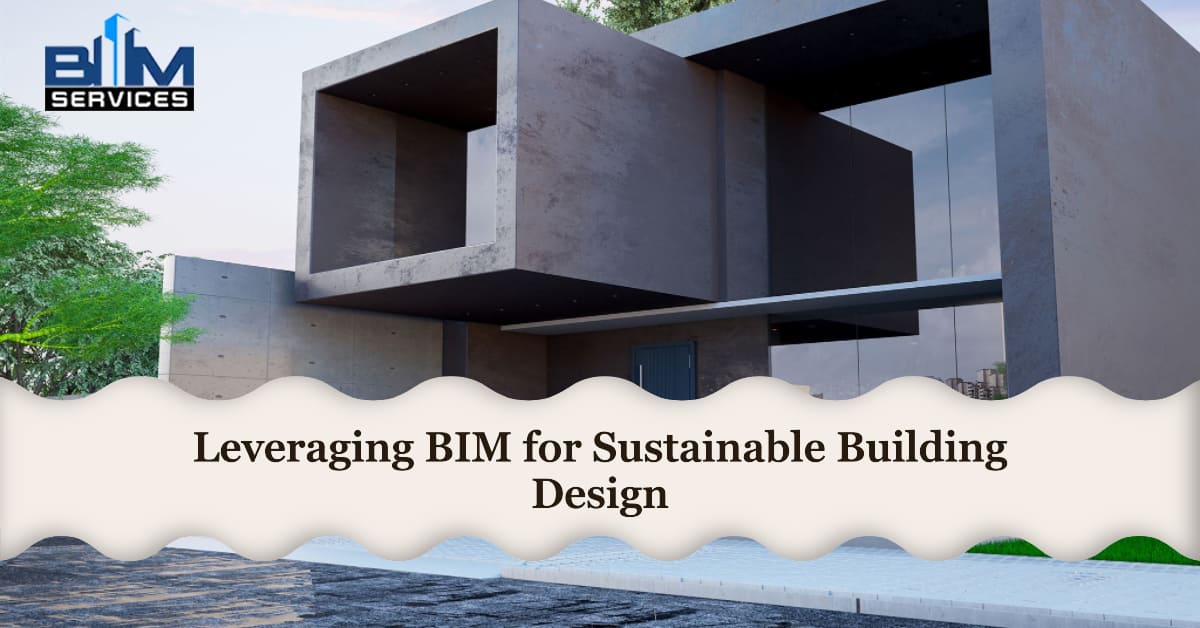Leveraging BIM for sustainable building design and energy efficiency

Sustainable building designs and energy efficiency are becoming significantly more important in the construction industry. This change is happening as sustainable building practices are being mandated in many countries.
Building Information Modeling, also known as BIM, is a very useful tool that can assist designers, engineers, and construction experts in digitally recreating conditions that are used to measure a building’s performance even before the construction is started. Using BIM Services, architects can optimise energy efficiency, reduce waste of construction material, and lower costs. In this article, we will discuss how BIM helps to achieve sustainable building design and energy efficiency.
Table of Contents
What is the role of BIM in sustainable building design?
BIM Modeling Services are used to create a digital 3D model of a building that accurately represents all the real-life attributes of the building, such as dimensions, materials, etc. Apart from being used in collaboration in the building process, BIM also allows construction managers to identify how they can design an energy-efficient building in a sustainable manner.
Benefits of BIM in Sustainable Building Design
Optimizing Energy Efficiency:
BIM is useful in improving energy efficiency during the pre-construction phase. By analyzing a building’s energy consumption, architects can make the required adjustments in their building design to improve the building’s energy performance. BIM can also help construction managers to decide which materials and technologies they should use to improve the building’s energy performance.
Identifying Opportunities for Improvements:
After the construction is complete and the building is functional, BIM can be used to make sure that the energy-saving changes are working and that opportunities for improvements can be noted. BIM also helps to analyze important data such as building orientation, thermal mass, and envelope leakage and spot areas where energy consumption can be reduced.
Realted Blog: What are the barriers to BIM implementation?
Optimum Use of Daylight:
Utilizing natural light to illuminate interior spaces of buildings is referred to as daylighting.” Apart from having a number of advantages for the building’s inhabitants, such as a more pleasant environment and general health, it can also help directly lower heat and energy loads as well as electrical demands from lighting. With the use of BIM, effective daylighting can be planned and implemented, which otherwise would be quite challenging.
Efficient Facility Management:
During the design and construction phases, maintenance personnel can be trained on the systems of their building using the data saved in BIM software. Building facilities managers and maintenance staff can contribute to ensuring the building realizes its return on investment, optimizes its performance, and lengthens the lives of its equipment with the right training and access to data.
BIM in sustainable construction:
Improved Collaboration:
BIM improves collaboration between architects, engineers, and contractors by providing a shared platform for design and construction. This can help reduce errors and rework, which can save time, money, and materials. BIM can also help improve communication between project stakeholders, which can help ensure that sustainable design goals and government mandates are met.
Reducing Waste:
Using BIM as part of their sustainable building design process helps reduce waste. With BIM, construction project managers can have a more accurate estimate of the number of materials required for the project.
BIM in Renovations:
BIM software is not limited to new construction and design projects. It can also be used effectively in renovation and retro-commissioning projects. BIM enables designers, contractors, and building owners to visualize and assess the impact of various new plans and materials on the sustainable qualities of an older building.
Related Blog: BIM utilization across the globe
Example of sustainable design and construction using BIM
The Atatürk Airport in Istanbul, Turkey, which is one of the world’s largest airports, was constructed using BIM. It showcases many sustainable design features, such as rainwater harvesting, a water treatment facility for recycling water from bathrooms to be used in landscape irrigation, and a solar power system that balances out the energy consumption of the airport by 10%.
Conclusion
BIM is a powerful tool that can help architects, engineers, and construction professionals design, simulate, and analyze a building’s performance before construction begins. By using BIM, designers can optimize energy efficiency, reduce waste, and lower costs. BIM can also enhance the design of sustainable buildings and help with the ongoing management of a building once it’s completed. With the increasing importance of sustainable building design and energy efficiency, BIM is becoming an essential tool for the construction industry.